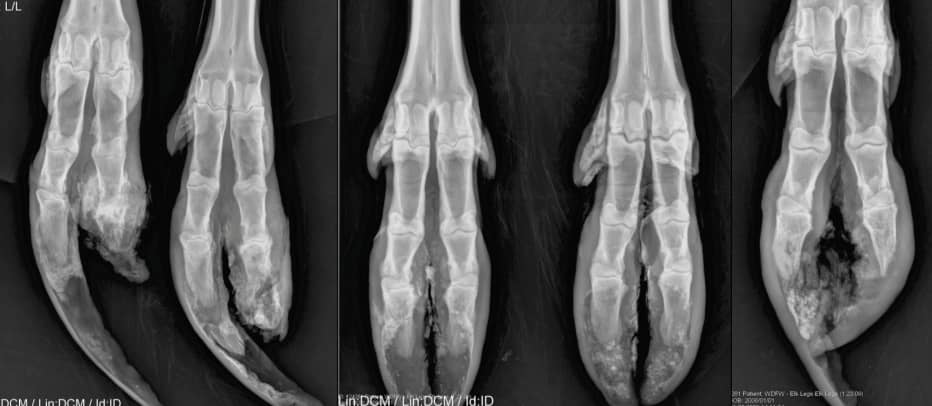Washington Officials Take Action Against Hoof Disease
OutdoorHub Reporters 06.25.14

Last month the Washington Department of Fish and Wildlife (DFW) announced that it finally identified the mysterious illness causing strange hoof deformities in the state’s elk, and now the department is moving ahead with its summer survey. State wildlife managers will be enlisting dozens of interested volunteers across southwest Washington to assess just how far the disease has spread, along with proposing new regulations that require hunters to leave behind harvested elk hooves. Another suggestion is to allow hunters to take one extra elk if the animal shows signs of hoof disease. Most importantly, the DFW plans on beginning a cull of infected animals, although when that happens may depend on the severity of the disease’s spread.
“At this point, we don’t know whether we can contain this disease,” said DFW Wildlife Program director Nate Pamplin in a press release, “but we do know that assessing its impacts and putting severely crippled animals out of their misery is the right thing to do.
Last month a 16-member scientific panel agreed that the disease causing the hoof deformities was most likely a variant of Treponema bacteria, the same genus of bacteria that causes syphilis and yaws. The disease has been previously found in sheep and cattle populations, but never before in a wild population—or to such an alarming extent. The deformities were first noticed by hunters and wildlife officials in the mid-1990s, but sightings have skyrocketed since 2008. Symptoms of hoof rot are now found in Cowlitz, Pacific, Lewis, Clark, Wahkiakum, and Grays Harbor counties. Although the disease is not fatal, it can cripple otherwise healthy elk and leave the animals unable to forage for food.

Not all experts are supporting euthanization, however. Some researchers said that too little is known about the disease to begin culling what could end up as a significant portion of southwest Washington’s elk herds.
“There are too many unanswered questions,” Mark Smith, a independent researcher working with the DFW, told tdn.com. “They haven’t been able to solve the problem, and now they’re trying to eliminate the problem.”
The DFW is still weighing its options in tackling the disease, but officials say their hands are tied by the lack of vaccines or reliable treatment options. Ranchers have developed methods to combat the disease in cattle—notably by bathing the animals’ hooves in an antibiotic solution—but the infection often returns. Experts say once the disease is present in an elk herd, it is very difficult to remove. Animals likely transfer the infection to one another by leaving the Treponema bacteria in moist soil, where it grows and is picked up by another member of the herd. Fortunately, the disease does not seem to be harmful to humans or affects the animals’ meat.
The plight of southwest Washington’s elk herds is a significant priority for the DFW. The department will be allocating up to $388,000 in its 2014 budget, including the hiring of new employees dedicated specifically to this issue. The DFW also plans to capture a number of elk next winter and fit them with radio collars to gauge how the disease is affecting area populations.
“Bacterial hoof disease in elk presents a huge challenge for all of us,” Pamplin said. “We will continue to work with scientists, hunters, and local communities to assess its toll on area elk herds and determine our course of action.”

